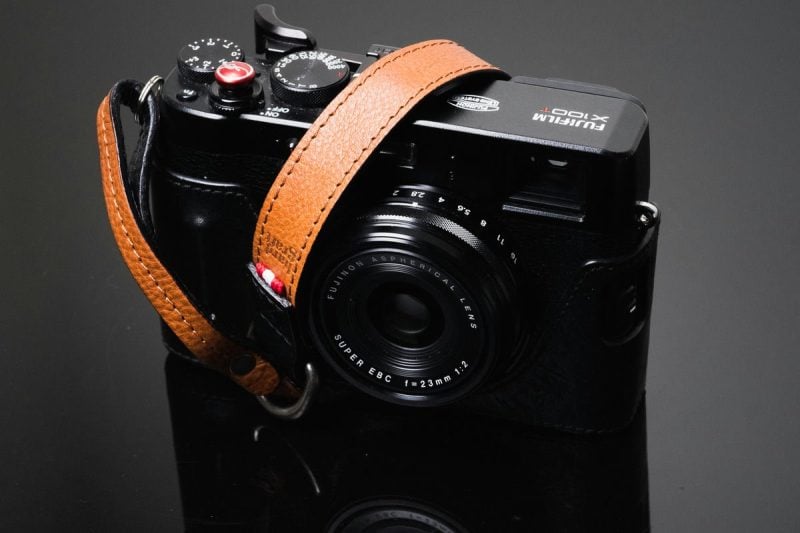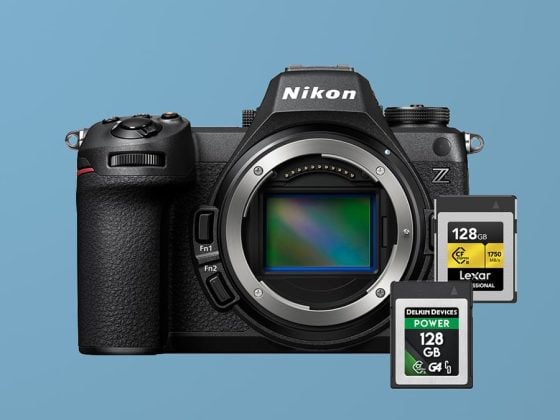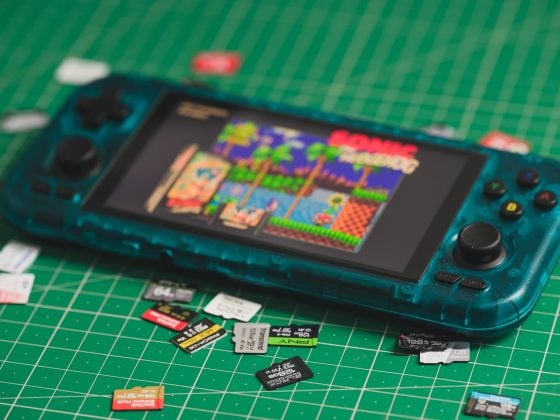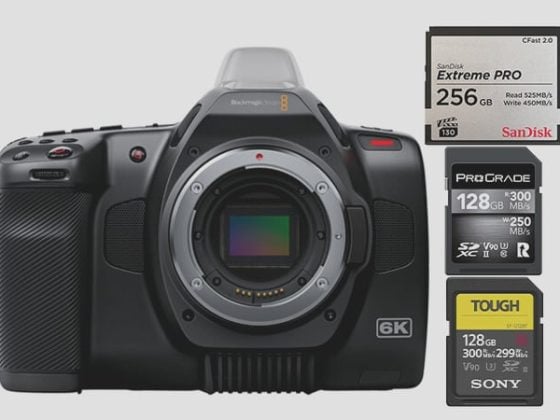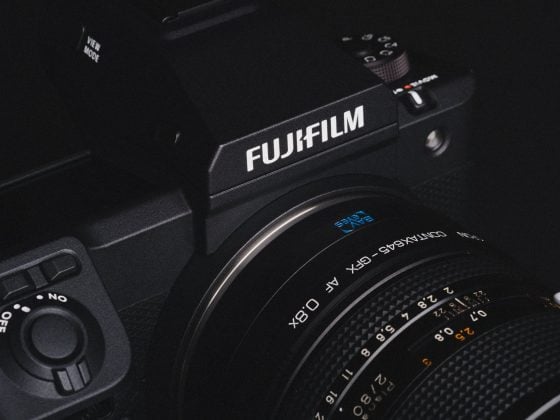Best Memory Cards For The Fuji X100T, X-E2, X30
I’ve ordered all the most popular memory cards and have tested their speeds with the Fuji X100T. Here are the results.
Fuji X100T SD Memory Card Speed Tests
The first read/write tests are how the SD card performs in the Macbook Pro built-in SD USB 3.0 card reader. This is the control. The third speed listed is the FujiX100T real-world test.
The FujiX100T Memory card speed test was done by shooting a burst of RAW images for a dedicated amount of time. Recorded video with another camera to capture the time it took to clear the buffer, then used the total amount of bytes captured per run, did the math, and got these numbers. Average of three runs per card.
| SD Memory Cards | USB 3.0 Read | USB 3.0 Write | Fuji X100T Write Speeds |
| Sandisk Extreme Pro 64GB Class 10 / U3 | 89.0 MB/s | 84.7 MB/s | 55.81 MB/s |
| Samsung Pro 64GB Class 10 / U1 | 86.8 MB/s | 77.2 MB/s | 51.93 MB/s |
| Sony 64GB Class 10 / U3 | 87.2 MB/s | 71.9 MB/s | 48.23 MB/s |
| Sandisk Extreme Plus 64GB Class 10 / U3 | 88.9 MB/s | 62.0 MB/s | 46.66 MB/s |
| Transcend 64GB Class 10 / U3 | 87.7 MB/s | 64.1 MB/s | 45.56 MB/s |
| PNY 64GB Class 10 / U1 | 86.1 MB/s | 54.5 MB/s | 45.33 MB/s |
| Lexar 600x 64GB Class 10 / U1 | 85.6 MB/s | 60.1 MB/s | 43.73 MB/s |
| Sandisk Extreme 64GB Class 10 U/3 | 71.3 MB/s | 52.1 MB/s | 40.83 MB/s |
| Kingston 64GB Class 10 / U3 | 88.1 MB/s | 74.3 MB/s | 32.36 MB/s |
Expect the 32GB and 128GB versions of the cards listed above to perform about the same.
The Sandisk Extreme Pro Class 10 / U3 cards are the fastest. The Kingston comes in second with MBP write speeds but the Fuji doesn’t like them for some reason.
Expect all the newer Fuji cameras even the Fuji X30 to perform about the same as with the X100T since they use similar sensors and processors. The Fuji X-Pro 1 will not take advantage of Class 10 cards so it will perform slower than the newer cameras. The X-T1 will also perform faster as it takes advantage of UHS-II cards. I’ll have tests for that in a few weeks.
Shooting JPEG
Shooting JPEG gives me interesting results. I seem to get write speeds between 25-35MB/s. But I think that is because the camera can only shoot so fast and the JPEGs are small so the write speeds don’t need to be that high. On the faster cards, I can shoot JPEG indefinitely at a high continuous shooting speed. It’s not till the slower cards that I start noticing a slow down in my continuous shooting – but only after fifty or so shots. So if you’re exclusively a JPEG shooter you won’t see a speed difference on any of these cards unless you’re continuously shooting for over a minute or two straight.
Shooting Raw+JPEG doesn’t really affect write speeds, however, it significantly slows down your burst speeds because for every shot it’s got to write RAW files and JPEG files.
Do You Think You Need A Fast Card?
The Fuji X100T has a very small memory buffer of about 100MB-200MB and the RAW or RAF files are about 33.5MB each. You’ll only be able to burst 7 or 8 shots before filling the buffer. Then clearing your buffer is going to be all about memory card write speeds. JPEG files are about 6.5MB each.
If you like to shoot in burst mode, then get the fastest SD card you can which right now is the Sandisk Extremes Pro. Also, this camera now has a built-in intervalometer. So if timelapse is your thing, get a faster card.
I would say go with a 32GB card but since the Fuji X100 series cameras and Fuji X-E2, X30, and X-T1 shoot such large RAW files, you might want to consider using a 64GB card just in case. I frequently fill up 32GB cards when I’m traveling. If you’re a JPEG-only shooter then a 32GB card will be fine.
UHS-I vs UHS-II And The Fuji X-T1
The Fuji X-series of cameras including the X30, X100s, and X100T as well as the Fuji X-E2 all have a Class 10 UHS-I bus speeds interface which will max out at speeds of 104MB/s. I’ve yet to see a UHS-I card run that fast. Except maybe when testing sequential uncached read and write speeds.
The Fuji X-T1 supports UHS-II memory cards. UHS-II is a much faster card but so far no other Fuji camera takes advantage of those speeds. So buying one is a complete waste of money unless you want faster transfer speeds to your computer and have some sort of USB 3.0 UHS-II SD memory card reader.
Speed Class 1 vs Class 3
On each card, you’ll see a U with a little number in it, either a 1 or a 3. This stands for the UHS speed class and has to do with minimum write speeds.
A Class 1 or U1 card has a minimum write speed of 10MB/s
A Class 3 or U3 card has a minimum write speed of 30MB/s
Minimum write speeds just mean that when a memory card is near full or fragmented it will still perform at its minimum class speed. This doesn’t mean that a Class 1 can’t write at 30MB/s, it just means a Class 3 is guaranteed to write at 30MB/s always.
On older cards, you’ll see a circle or a C with a number in them. These numbers also represent minimum speeds.
Class 2 – Minimum write speed 2MB/s
Class 4 – Minimum write speed 4MB/s – Fuji X10, X-Pro1, X-E1, X100, XF1, XS1
Class 6 – Minimum write speed 6MB/s
Class 10 – Minimum write speed 10MB/s – Fuji X-E2, X30, X20, X100s, X100T, X-T1, XQ1, XA1, XM1
SDXC Cards – Why They Are Important
SDXC and SDHC (which are older) have to do with the host control that handles memory storage. The SDHC which has now been replaced by SDXC, had a Fat35 file system to it. Now SDXC has a mandatory exFAT file system which is 64bit.
This file system is important when using new Sony video Codecs like XAVC which was introduced back in 2012. If you have something like a Sony A7ii or a Sony action camera it is mandatory that you have an exFat SDXC card to shoot XAVC video. This is why from now on if you buy any new cards, you should buy SDXC cards so have something that will work on future devices.
My Thoughts on Choosing The Best SD Memory Card for Your Fuji X100T, Fuji X-E2
It’s hard to say what card you should buy for your Fujifilm X100 T or Fujifilm X-E2, or Fuji X30. It really depends on your budget and style of shooting. I personally would get the fastest card, well personally I have purchased all the cards – but the Sandisk Extremes Pros always seem to be on the cutting edge of innovation and they seem to have some of the highest-quality cards out there. But that doesn’t necessarily make them any better than a Transcend or PNY in real-world everyday-style shooting situations. If you don’t shoot a lot, 32GB is probably fine, I rarely fill up a 32GB card in one day unless I’m traveling.
If you’re a photographer that likes to have the best and shoots a lot in burst mode, get the good cards. If you’re a photographer that wants more space or more cards, then try out the cheaper ones and see how they work for you. You probably won’t be able to notice the difference between a faster card and a slower card in most situations.
| **This website contains affiliate links. We will earn a small commission on purchases made through these links. Some of the links used in these articles will direct you to Amazon. As an Amazon Associate, I earn from qualifying purchases. |

